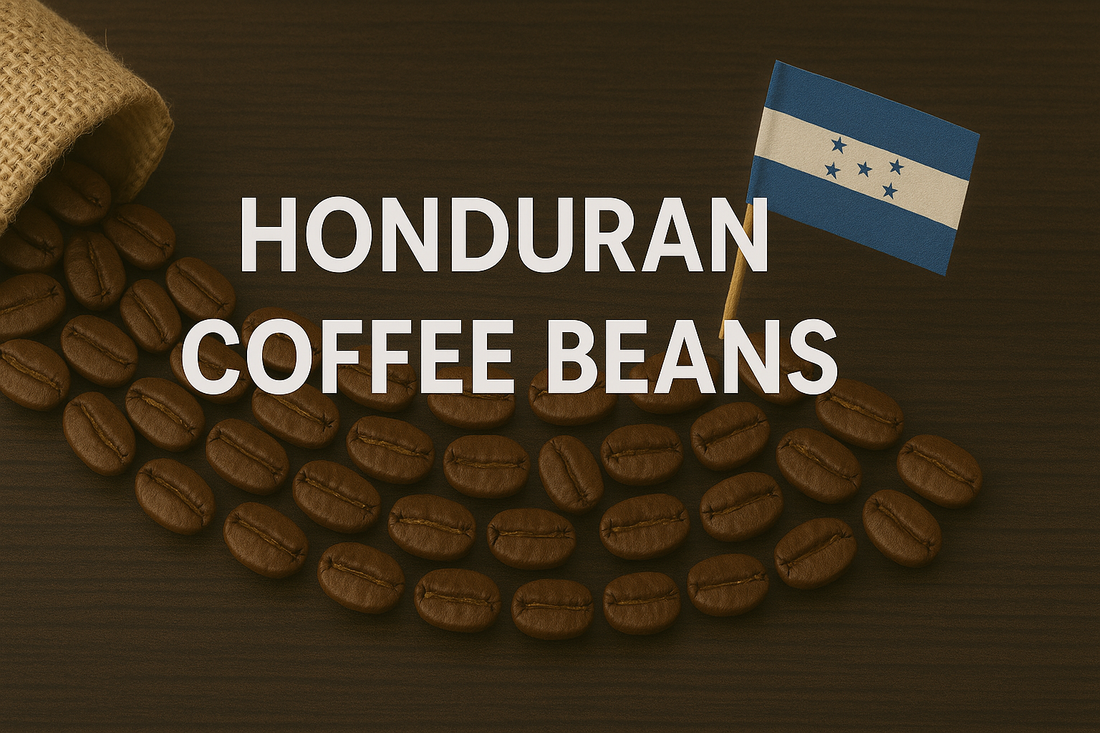
Honduran Coffee Beans
正啟 GLOBALEYESShare this news
Coffee plants were introduced to Honduras during the 18th century but initially cultivated by only a handful of small-scale farms located in high-altitude regions. It wasn't until the 1960s that demand for coffee surged significantly, especially after the involvement of the United States Agency for International Development (USAID), which assisted small-scale Honduran farmers in expanding production and improving infrastructure. Additionally, the International Coffee Agreement further helped Honduran coffee achieve profitability.

In the 1970s, the Honduran Coffee Institute (IHCAFE) was established, a nonprofit organization aimed at enhancing local coffee production, driving technological reforms, and offering credit facilities to coffee farmers.

During the 1980s and 1990s, Honduras enacted legislative measures encouraging coffee production, including the Coffee Enterprise Protection Law and Agricultural Modernization Law. The former encouraged landowners to expand coffee production and provided subsidies for road construction and maintenance in coffee-growing regions. The latter enhanced land ownership by allowing cooperative members to divide land into smaller parcels. These policies achieved considerable success: between 1970 and 1996, Honduran coffee production more than doubled, surpassing bananas to become the nation's largest agricultural export, elevating Honduras to become the ninth-largest coffee-producing country globally.

Beginning in the 21st century, the specialty coffee industry in Honduras expanded rapidly, thanks to fertile soil conditions and unique microclimates ideal for specialty coffee. With continued efforts from local farmers and IHCAFE, specialty coffee production kept rising. By 2017, specialty coffee exports from Honduras had grown to approximately 30%, regularly achieving excellent results in the Cup of Excellence competitions.

Honduran Coffee Characteristics
Honduran coffee typically exhibits rich and sweet flavors. It is generally cultivated at altitudes between 1200m to 1800m, with harvesting taking place annually from November through April. Each year, over 2 million Hondurans participate in the coffee harvesting process.

Major Coffee Regions in Honduras
Copán
- Location: Western Honduras, near Guatemala. Home to the country's highest peaks with significant temperature and humidity variations, creating a unique climate.
- Altitude: 1,000 – 1,500 meters
- Primary Varieties: Caturra, Bourbon, Catuai
- Harvest Season: November to March

Opalaca
- Location: East of Copán, covering most areas of Santa Barbara, Intibucá, and Lempira.
- Altitude: 1,100 – 1,500 meters
- Primary Varieties: Caturra, Bourbon, Typica
- Harvest Season: November to February

Montecillos
- Location: Southwestern Honduras along the Salvadoran border. Its high elevation and significant temperature differences lead to slow ripening of coffee cherries, resulting in sweeter and superior flavor quality.
- Altitude: 1,200 – 1,600 meters
- Primary Varieties: Caturra, Catuai, Bourbon, Pacas
- Harvest Season: December to April

Comayagua
- Location: Central Honduras, composed of Comayagua and Francisco Morazán departments. According to IHCAFE, this region boasts Honduras’ highest coffee production and has won the Project Origin Best of Honduras Washed championship, highlighting its potential for both quality and volume.
- Altitude: 1,200 – 1,600 meters
- Primary Varieties: Caturra, Bourbon, Typica
- Harvest Season: December to March

Agalta
- Location: Southeastern Honduras. The area features a tropical climate, producing coffees typically characterized by tropical fruit, caramel, and chocolate flavors.
- Altitude: 1,000 – 1,400 meters
- Primary Varieties: Caturra, Bourbon, Typica
- Harvest Season: December to March

El Paraíso
- Location: Southern Honduras, bordering Nicaragua, with relatively higher average annual temperatures. Coffee beans from this region have won Cup of Excellence awards, underscoring significant flavor potential.
- Altitude: 1,000 – 1,400 meters
- Primary Varieties: Caturra, Catuai
- Harvest Season: December to March

Flavor Profiles by Region
Compared to other Central American coffee-growing countries, Honduran coffee is equally exceptional, and in some nuanced flavors, even superior. For instance:
- Copán: Coffees typically exhibit chocolate notes, fruity aromas, and juicy sweetness.
- Montecillos: Known for sweet fruity aromas, vibrant acidity, and notes of orange and peach.
- Comayagua: Similar to Montecillos, with lively acidity, matching sweetness, and bright citrus notes.
- Agalta: Tropical fruit and caramel notes with a sweet aftertaste and chocolate aroma.
- El Paraíso: Provides balanced sweetness and citrus aromas, soft body, and pleasant acidity.

Honduran Coffee Grading System
In Honduras, coffee beans are graded based on altitude rather than directly by flavor or quality, categorized into the following three levels:
- Strictly High Grown (SHG): Above 1,200 meters
- High Grown (HG): Between 1,000 – 1,200 meters
- Central Standard (CS): Below 1,000 meters

All Honduran coffee beans are 100% Arabica, with approximately 69% graded as HG, 12% as SHG, and 19% as CS.

